Catalina 270 Running Rigging (Initial Notes)
I have owned two Catalinas now, a 1984 Catalina
27 and this 2000 Catalina 270. I like
Catalinas, they make nice boats in so many ways, so I keep owning
them! But one downside is that the factory running rigging designs
leave something to be desired. I've also owned a Colgate 26 and done a fair amount of
racing on various other boats so I have developed some ideas of what
I'd like.
The Catalina 270, like the C27, has some inherent limitations:
- Mid-boom sheeting
- Very limited
cabin-top space for lines (
here is a good read on what a Catalina 27 owner did to address
these problems)
My C270 has one additional limitation/benefit which is that a
previous owner installed a dodger. This further limits cabin-top
space (but is so nice on cold or hot days!)
This page has my summary on what I found and what I don't like.
If you'd like to see how I solved the problems documented here, see
my C270 Running Rigging 2.0 document.
1. Mainsheet
So near, yet so far! Due to the dodger, the mainsheet isn't
accessible at the traveler:
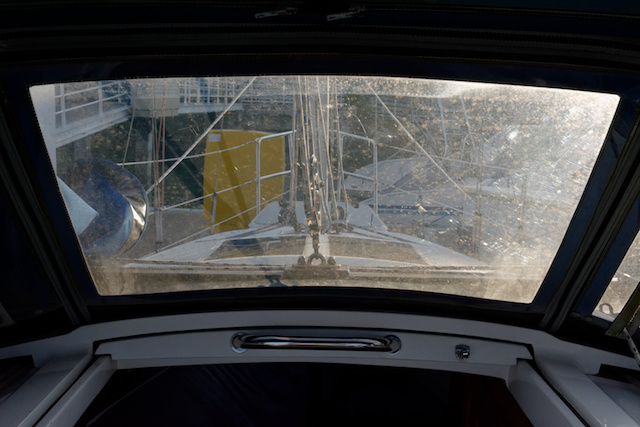
The mainsheet (and main halyard) go through clutches on the
starboard cabin top. That is just wrong! The mainsheet must be free
to run at all times.
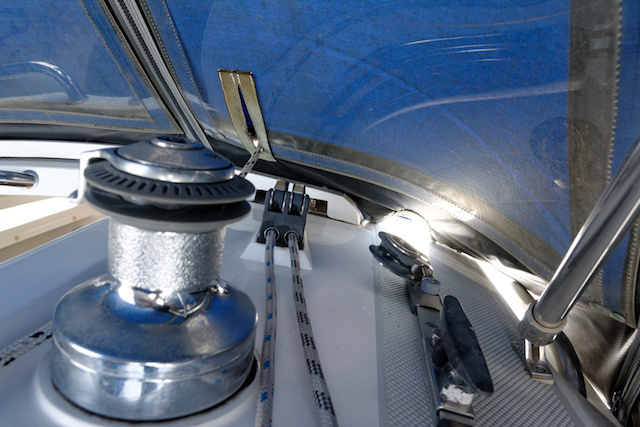
This also means the mainsheet is not available to the helmsman which
is a problem. If the mainsheet is held by the winch self tailer it
means it can't be dumped from the helm. Otherwise, the helmsman
needs to hold on to it continuously which is going to get very
tiring very fast. That's how I've had to sail it initially, but it
is not a good answer. Also, if sailing with friends it means the
mainsheet is crossing the cockpit which is uncomfortable for
everyone.
If the jib is led to the cabin-top track that further complicates
the problem, as the winch isn't available for the mainsheet on port
tack.
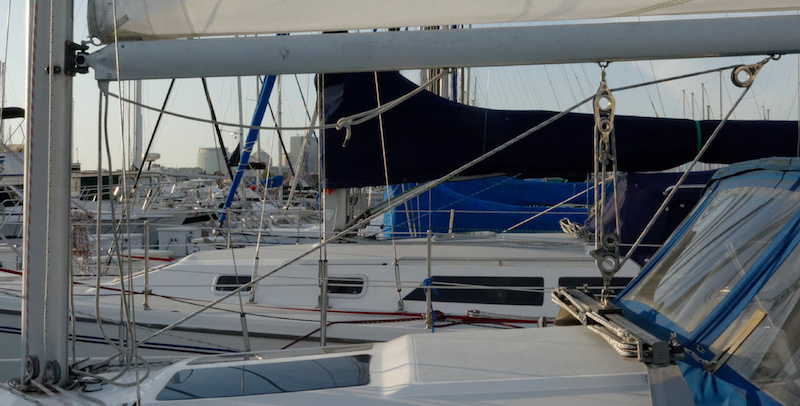
So, the mainsheet setup needs to be redesigned as the #1 priority.
2. Reef Lines
The factory setup is a mess: a single-line that goes through the
reef tack, through the boom to an internal car and back out. A
complex setup with lots of friction and, worst of all, a risk of
tearing the main. Proper reefing calls for tensioning the main
halyard first, before putting any tension on the clew line.
Only one reef is possible with this arrangement.
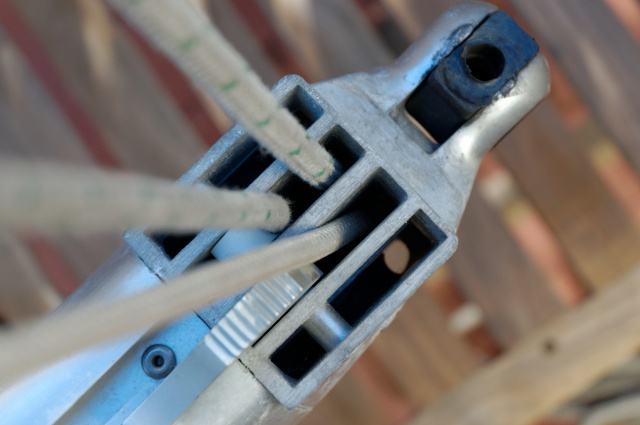
The owners manual has a diagram of the lines inside the boom but I
don't find it clear, here is clearer drawing of the reef line and
car inside the boom:
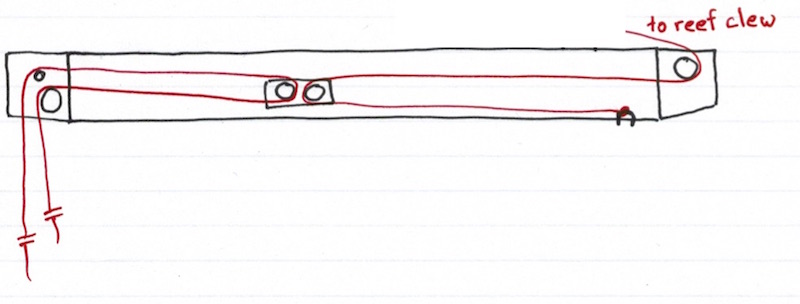
This is what the internal car looks like:
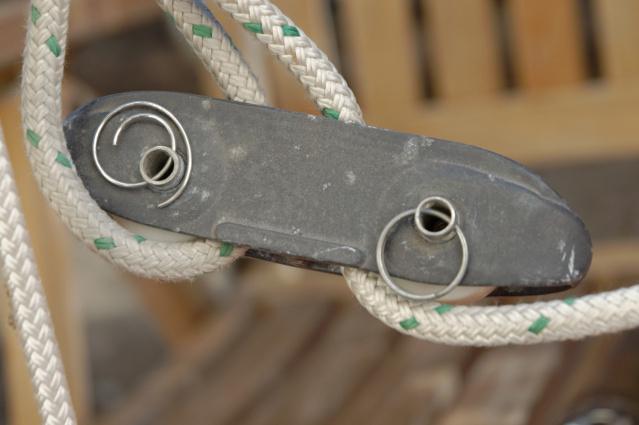
3. Outhaul
The outhaul terminates in the boom by the gooseneck, which isn't
particularly useful (even less, given the dodger).
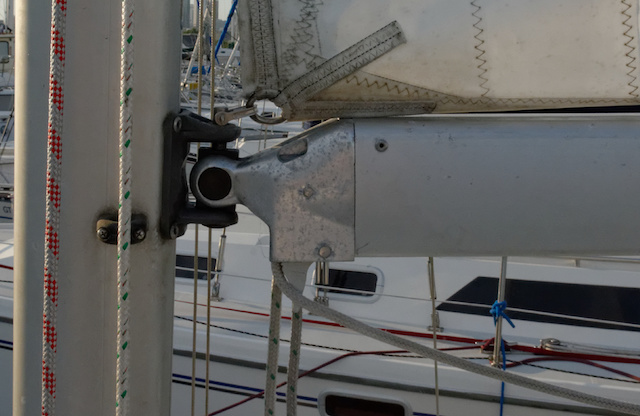
The factory outhaul also has that most annoying of rigging
misfeatures, a line jammer in the boom. These are nothing but
trouble.
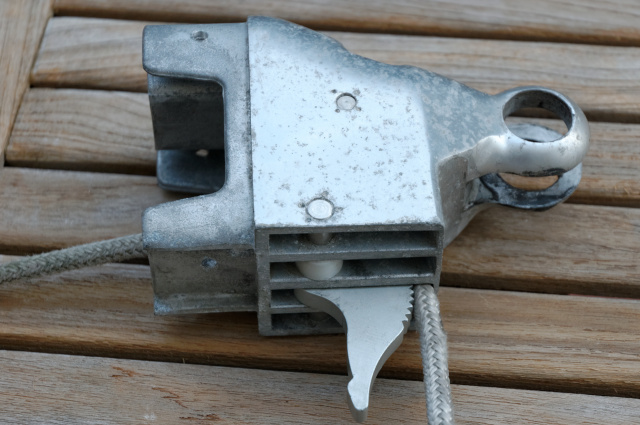
The owners manual has a diagram of the lines inside the boom but I
don't find it clear, here is clearer drawing of the outhaul inside
the boom:

The line marked #1 measures 30 inches (not including extra line
needed to tie the knots).
Line marked #2 measures 95"
Line #3 measured 200"
The existing line was 8mm thick.
A photo of what it looks like outside the boom:
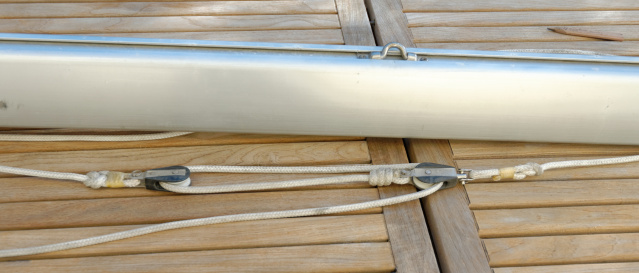
4. Boomvang
NONE
5. Cunningham
NONE
6. Topping lift
The topping lift terminates at the mast, which is fine, except the
mainsheet and reef line terminate at the cabin top! That means
raising or lowering the main (or reefing) involves running back and
forth between the mast and the dodger.
7. Main halyard
The main halyard leads to a starboard side cabintop clutch. This is
fine by itself, although as noted the topping lift terminates at the
mast which means running back and forth. Also, given the limited
cabin top space for lines it is a waste to use up one slot for the
main halyard. I just about never adjust the main halyard underway
(cunningham is easier) so I'd rather free up the slot.
8. Jib halyard
The jib halyard leads to a port side cabintop clutch. It's nice to
be able to adjust the tension so this is a good location.
There is also a second jib halyard also leading to a port side
cabintop clutch. There isn't really a need for this so it
effectively wastes a slot but there it is.
9. Jib sheets
This problem wouldn't apply to most C270s but because mine has a
dodger, the jib sheets like to get caught beneath the dodger like
this:
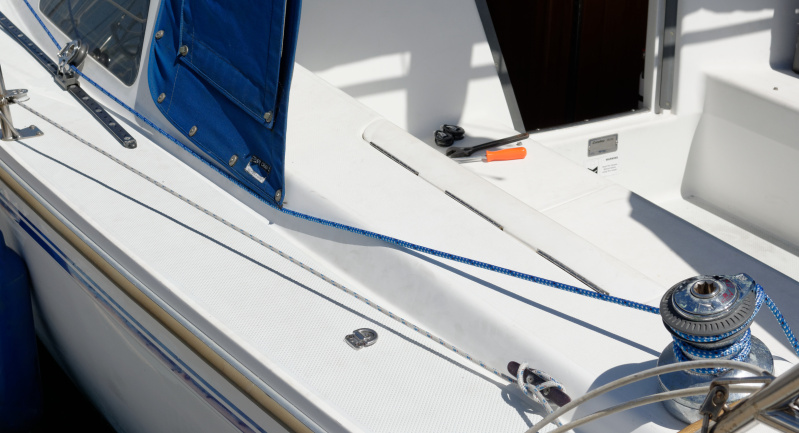
On every tack I need to remember to clear the line or else it tends
to rip out the button which holds the dodger in place. Annoying!
Summary
Here's a rough drawing of the existing arrangement when I bought the
boat (according to the owners manual this is also the factory
layout, looks like previous owners have made no changes):
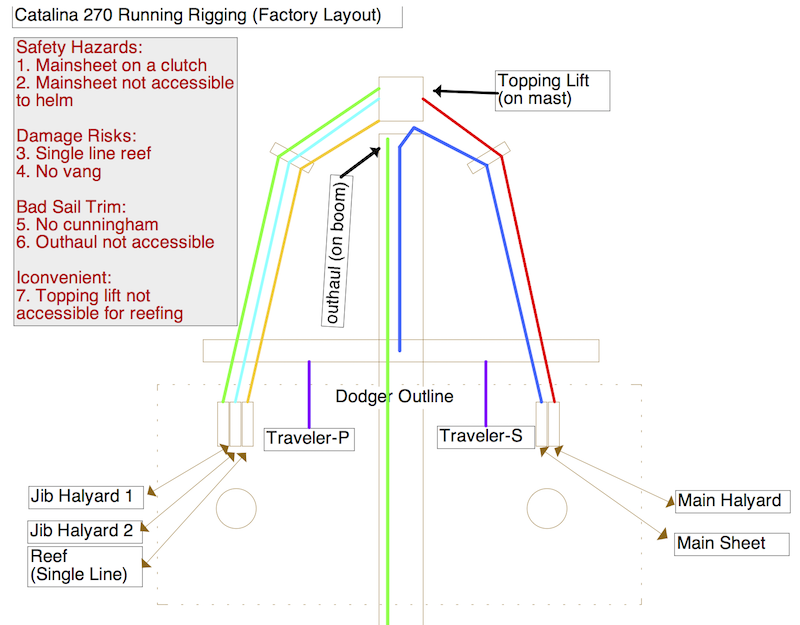
Back to my Catalina 270 page.











